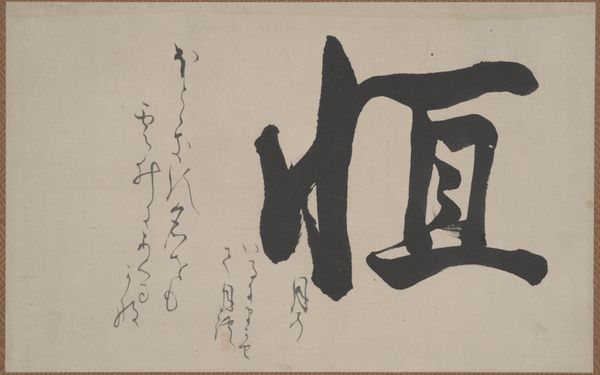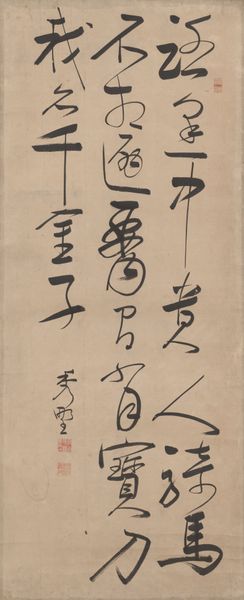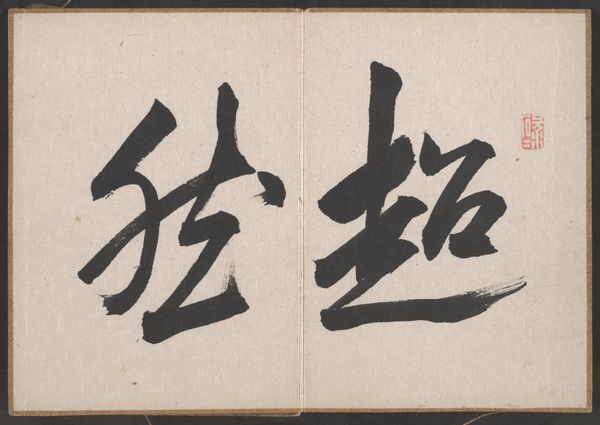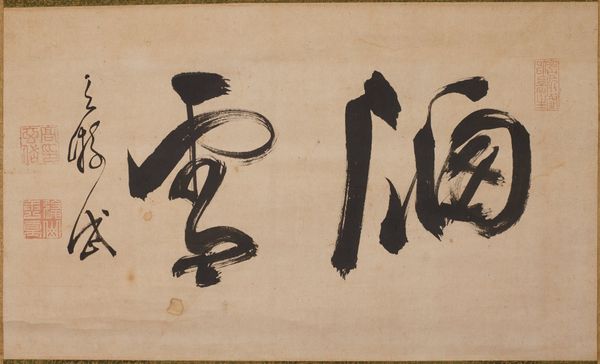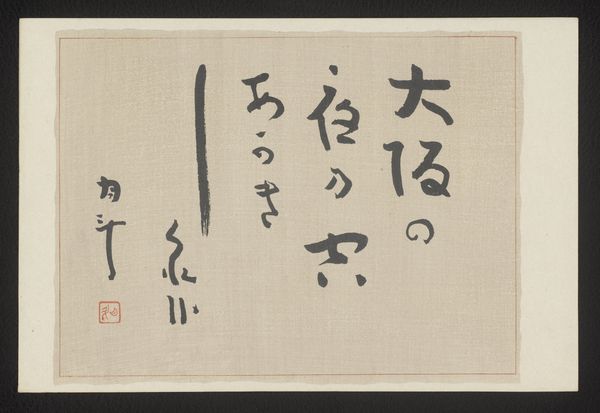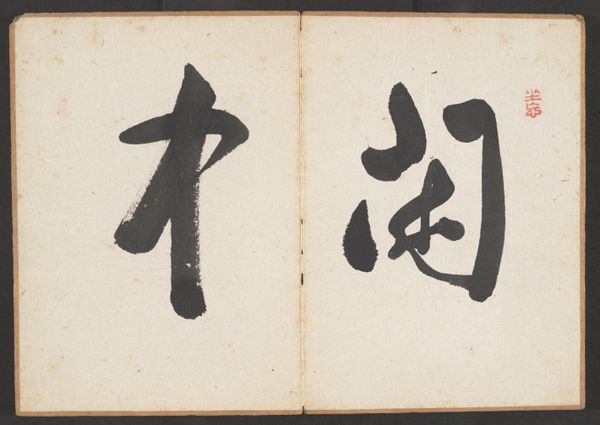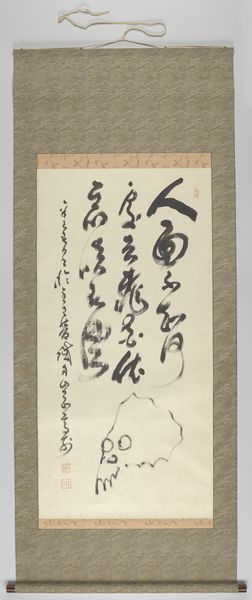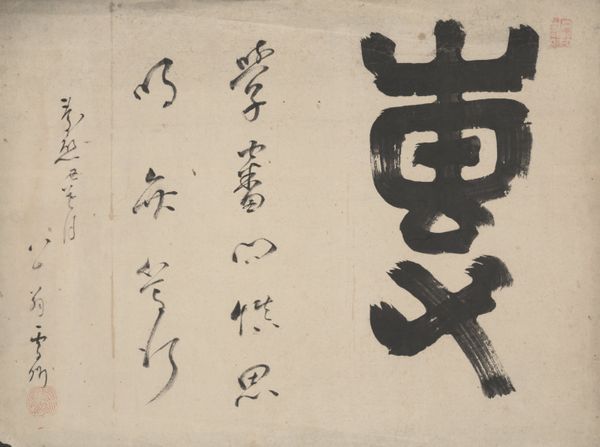
Rear View of the Mountain Villa for Watching Clouds 1844 - 1845
0:00
0:00
paper, ink
#
asian-art
#
landscape
#
paper
#
ink
#
orientalism
#
calligraphy
Dimensions: Frontispiece: 12 7/8 x 51 in (32.8 x 129.3 cm); Painting by Yu Zouyan: 12 7/8 x 39 5/8 in (32.9 x 100.5 cm); Poems by Zhang Xianghe: 12 1/4 x 74 1/2 in (31.1 x 189.2 cm); Painting by Yan Bing: 12 3/8 x 78 1/2 in (31.3 x 199.5 cm
Copyright: Public Domain
Curator: Looking at "Rear View of the Mountain Villa for Watching Clouds," created by Yu Zouyan between 1844 and 1845, what strikes you first? Editor: It's immediate: the raw texture! You can almost feel the coarse grain of the paper and see how the ink bleeds ever so slightly into its fibers. The work is so immediate and tactile; you see the making in every stroke. Curator: It's important to note this piece’s connection to the scholarly retreat. Viewing nature and recording impressions through art became intertwined with one’s status and philosophical stance in 19th-century China. What do you think this says about that particular society? Editor: What stands out is this interplay of naturalism and intellectual labor. We're presented with what appears to be a view, an 'observation' from within, yet simultaneously we are intensely aware of its crafted nature: the specific application of the ink and pressure as it relates to the paper. Were specific techniques employed by Zouyan, given the cultural moment? Curator: Zouyan and many other artists chose ink on paper at this time because it lends itself beautifully to expressing subtleties. Beyond technique, consider how these scholar-artists, like Zouyan, controlled their image. Their choice of landscape wasn't neutral; it was about presenting themselves as men of refined taste, detached from crass materialism, aligning themselves with ancient virtues during a time of societal change. Editor: Agreed! But seeing this, it’s also important to think of who produced the paper itself and who made the ink, not only regarding status. We’re still considering material that required human capital and time for creation, often outside the direct purview of the artists we admire. Even a retreat is made possible by systems of production. Curator: Indeed. This work speaks to the complex social and cultural forces that shaped art production. It's fascinating how much we can read from something that, at first glance, seems simply to depict a view. Editor: Yes, absolutely. What a stark and moving reminder of material existence made possible only by human toil!
Comments
No comments
Be the first to comment and join the conversation on the ultimate creative platform.
